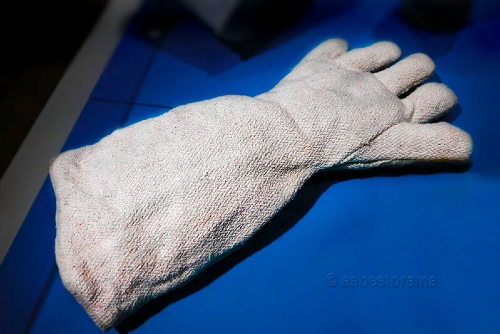Metalworkers
Scientifically Reviewed By: Arti Shukla, Ph.D. | Written by: Sean Marchese, MS, RN | Last Update: 05/06/2025 | 6 Min Read
The job of a metalworker often involves intense fire and heat, which led to a heavy reliance on asbestos and its heat-resistant properties. Metalworkers have suffered higher rates of mesothelioma and asbestos-related lung disease as a result of occupational exposure.
Scientifically Reviewed By: Arti Shukla, Ph.D. | Written by: Sean Marchese, MS, RN | Last Update: 05/06/2025 | 6 Min Read
Written by: Sean Marchese, MS, RN | Scientifically Reviewed By Arti Shukla, Ph.D. | Edited By Walter Pacheco | Last Update: May 6, 2025

"My primary support since being diagnosed with Mesothelioma, ...." see more
Mary L. - Mesothelioma Patient
"I found out about The Mesothelioma Center while researching ...." see more
Karen F. - Mesothelioma Patient
"I just want to take this time to thank Mesothelioma Center f...." see more
Richard D. - Mesothelioma Patient
"My brother was recently diagnosed with mesothelioma. I began...." see more
Cindy W. - Sister of a Mesothelioma Patient
"My father was recently diagnosed with mesothelioma. We, as a...." see more
Cindy R. - Daughter of a Mesothelioma Patient
-
Asbestos-Related Disease Risk:High
-
States with Highest Employment:California, Florida, Louisiana, Michigan, New York, Pennsylvania, Ohio, Texas
How Metalworkers Were Exposed to Asbestos
Metalworkers in the U.S. military and private sector experienced significant asbestos exposure, putting them at risk of mesothelioma and other asbestos-related diseases. Even their protective heat-resistant gear, including the gloves and aprons metalworkers wore to shield themselves from heat and flame, often contained asbestos.
Asbestos-lined boilers, furnaces, pipes and tanks released toxic fibers into the air when metalworkers disturbed them in the course of their jobs. The spaces they worked in around these asbestos fibers were often poorly ventilated. As a result, metalworkers have historically had high rates of mesothelioma.

This occupational exposure affected the following metalworkers: blacksmiths, forge men, foundry workers, iron workers, metal lathers, sheet metalworkers, smelters, steel mill workers, structural metal craftsmen, tinsmiths and welders. Workers’ families also faced secondary exposure when asbestos fibers were accidentally brought home on work clothes, skin and hair.
Asbestos Products Metalworkers Used and Made
Metalworkers maintained, manufactured, used and worked around many products made with asbestos. The mineral was considered ideal for use in metalwork for its resistance to high temperatures.
Common Asbestos Products Metalworkers Encountered
- Coatings: Metals were coated with an asbestos finish for durability and heat resistance.
- Construction materials: Asbestos bricks, ceilings, cement, flooring and pipes were common at metalworker jobsites.
- Fireproof boards and curtains: Hung around workstations to contain flames and heat.
- Fireproofing sprays: Applied to ceilings and structural components to reduce fire hazards.
- Gaskets and seals: Used in equipment joints, high-temperature valves, pumps, turbines and welded machinery.
- Insulation materials: Used to wrap around boilers, ducts, furnaces and steam pipes in factories, industrial buildings and refineries.
- Protective clothing: Woven into textiles like aprons, gloves and jackets designed to resist high temperatures.
- Refractory bricks and cement: Kilns, ladles, lined furnaces and other heat-intensive equipment.
- Welding blankets: Fireproof sheets laid over surfaces to contain sparks and heat.
Each time these products were moved, replaced or damaged, asbestos fibers could be released. These microscopic fibers are invisible to the naked eye and can linger in the air, posing health risks long after welding work is completed.
Manufacturers of Asbestos Products Used in Welding
Construction, textile and other manufacturers produced asbestos-containing safety gear and materials used in steel mill work, welding and other types of metalwork. Many of these companies later became the subject of mesothelioma lawsuits.
After facing mounting litigation, some of these manufacturers declared bankruptcy. As part of their chapter 11 proceedings, they created asbestos trust funds to set aside money for future claims and compensate harmed workers.
Companies Known for Asbestos Products Metalworkers Used
- Armstrong World Industries: Manufactured tiles and insulation with asbestos fibers.
- Aspromet Company: This company made a product called Asbestos Protected Metal that was installed in hangars belonging to the U.S. armed forces.
- Eagle-Picher: Known for high-temperature insulation used in furnaces and foundries.
- Foseco: Made asbestos foundry products, including hot top insulation, Ferrux hot topping compound, metal casting core coatings, exothermic riser sleeves (Kalminex brand) and furnace linings.
- GAF Corporation: Distributed insulation and roofing materials used in steel plants.
- Garlock Sealing Technologies: Produced asbestos gaskets, cloth, packing and seals metalworkers encountered in welded joints and at construction sites and foundries.
- Guard-Line Inc.: Made asbestos gloves used by welders and metalworkers.
- H.H. Richardson Company: Manufactured Galbestos panels, a galvanized, corrugated sheetmetal that bore an asbestos felt coating.
- Johns Manville: Produced cement, heat panels, insulation and textiles used in industrial settings and shipbuilding.
- Owens Corning: Manufactured asbestos-based insulation for pipes and boilers, as well as other asbestos construction products.
- Owens-Illinois Inc.: Manufactured Kaylo brand asbestos block insulation and pipe covering.
- Raybestos-Manhattan: Produced brake linings and protective gear like asbestos gloves and welding safety gear.
- Richmond Fireproof Door Company: Made an asbestos metal fireproof door under the brand name Fyrgard.
- Steel Grip: Made asbestos gloves and asbestos shoe coverings steelworkers used.
- Union Carbide: Created asbestos refractories and insulation blocks for industrial settings.
- Wallace-Murray Corp.: Manufactured asbestos metal products under the brand name Metalbestos.
- W.R. Grace & Co.: Produced asbestos insulation and fireproofing sprays.
Metalworkers often had no idea the products they used every day as welders, steel mill workers, etc., could harm them. Even small, routine jobs could lead to dangerous exposure over time, with health effects showing up decades later.

Receive a free guide with the latest information on emerging treatments and clinical trials.
Get Yours NowMetalworkers and Mesothelioma
Mesothelioma has been linked to asbestos exposure in metalwork, especially when workers were in close contact with insulated surfaces or worn fireproof gear. Several studies have linked various types of metalwork with higher mesothelioma incidence rates.
Two 2024 studies found welding and steel mill work both had high asbestos exposure rates and risk of disease. One study in Journal of Occupational and Environmental Hygiene confirmed steel mill workers performing maintenance and furnace work had significant concentrations of asbestos fibers found in their lungs. Another study in Ultrastructural Pathology reported welding put workers and anyone working nearby at risk.
According to the International Agency for Research on Cancer, welders have a higher incidence of lung-related diseases, including mesothelioma. And a study in the Journal of Exposure Science & Environmental Epidemiology in 2023 found metalworkers had a significantly higher risk of developing mesothelioma.
Compensation for Exposed Metalworkers
Metalworkers, including sheet metalworkers, steel mill workers and welders, who have been diagnosed with mesothelioma may be eligible for compensation. Successful asbestos claims can help cover medical treatment, lost income and travel expenses related to care.
Patient Advocates, particularly those who are VA-accredited claims agents, can help guide mesothelioma survivors through filing for VA benefits. They can also help people find the right legal help for them to file asbestos trust fund claims or a lawsuit.
Common Legal and Financial Options
- Asbestos trust fund claims: Payouts from bankrupt companies that sold asbestos materials.
- Personal injury lawsuits: Claims filed against the manufacturers of asbestos products.
- VA benefits: For military welders exposed during service.
- Workers’ compensation: Benefits from state programs tied to occupational illness.
Two ex-welders who utilized asbestos products from Lincoln Electric sued the company in 2007 over asbestos exposure that caused their mesothelioma and lung cancer diagnoses. The jury awarded them more than $6 million in damages.
Legal options vary based on diagnosis, work history and the companies responsible for exposure. Filing a claim doesn’t interfere with your access to medical care. An experienced asbestos attorney can help ensure deadlines are met and compensation is maximized.
Recommended Reading


